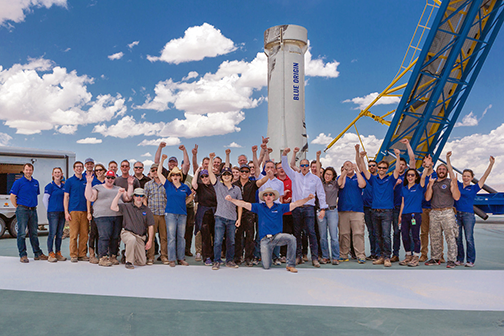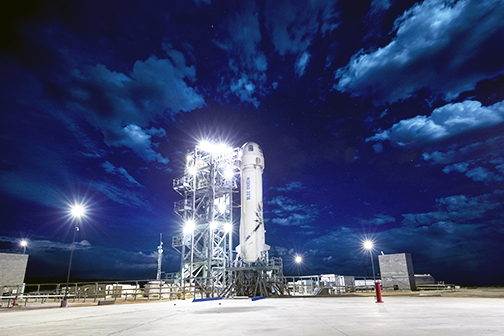
Blue Origin successfully launched a mannequin-crewed, New Shepard Mission 8 repurposed rocket, with the vehicle reaching the highest altitude ever attained by that launch vehicle of 107 kilometers (351,000 feet) — the rocket was successfully relanded at the West Texas launch site, accompanied by a sonic boom.
Aboard are payloads that represent a range of users, from NASA’s Johnson Space Center to a small commercial communications firm, as well as the firm’s first European customers, funded by the German national space agency, DLR. Each of the payloads was outfitted with a custom Blue Origin Payload Locker to provide structural, power, and data interfaces throughout the flight.

The New Shepard Mission payload customers. Courtesy of Blue Origin.
Suborbital Flight Experiment Monitor-2 (SFEM-2) NASA Johnson Space Center (Houston, Texas: NASA’s Suborbital Flight Experiment Monitor-2, or SFEM-2, was designed to characterize payload test environments in support of the NASA Flight Opportunities program and other payload initiatives. The sensor suite collects cabin environmental data (CO2, pressure, acceleration, acoustics) and also tests components for future flights on NASA’s Orion capsule.
Schmitt Space Communicator (SC-1x) Solstar (Santa Fe, NM), developed with private funding: The Schmitt Space Communicator, named after Solstar advisor and Apollo 17 astronaut Harrison “Jack” Schmitt, is a technology demo to test the concept of providing commercial Wi-Fi access to in-space users and is being conducted with support from NASA’s Flight Opportunities Program.
University of Bayreuth with ZARM (The Center of Applied Space Technology and Microgravity at the University of Bremen) and funding from German space agency, DLR: The Daphnia experiment investigates the effects of microgravity on gene expression.

The New Shepard launch vehicle on the launch pad. Courtesy Blue Origin.
Otto von Guericke University (Magdeburg, Germany) with ZARM (The Center of Applied Space Technology and Microgravity at the University of Bremen) and funding from German space agency, DLR: EQUIPAGE studies the motion of macroscopic rod shaped grains to validate physics models of these systems under microgravity conditions.
University of Duisburg-Essen with ZARM (The Center of Applied Space Technology and Microgravity at the University of Bremen) and funding from German space agency, DLR: EUPHORIE uses a laser to examine the phenomenon of photophoresis, the interaction of light on solid particles suspended in a gas. As the laser heats one side of such particles, it warms nearby gas molecules and accelerates the particle towards its cooler side. This research has applications to the study of early solar system evolution and meteorite formation.
More info regarding the rocket's payloads may be obtained at www.blueorigin.com/payloads/.

